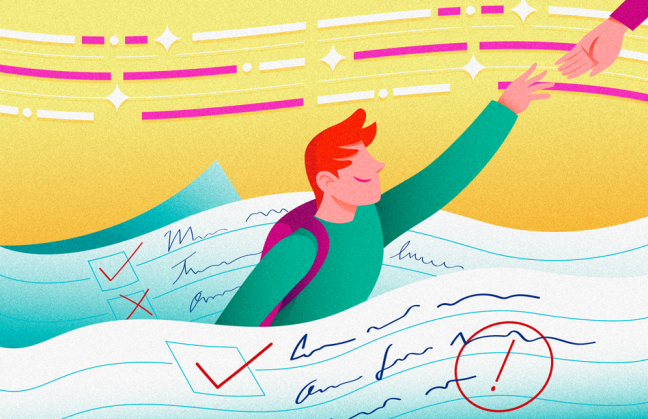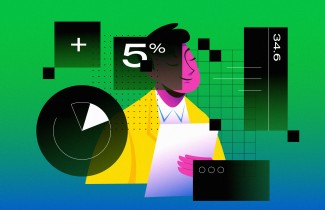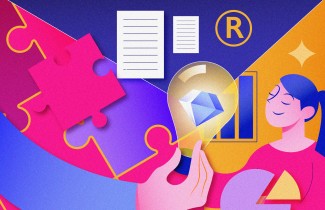The Transformative Potential of Active Learning
We propose a framework that integrates active educational tools and emerging techniques to enhance the academic experience

Education today is facing the huge challenge of engaging new generations, improving their class participation, and generating effective learning that will provide them with the knowledge and practical tools they need to tackle the professional challenges of the future. Just a month ago, the PISA 2023 Report –the most important assessment of the state of education in the world– delivered its worst ever global results, with declines in practically every country and the OECD as a whole, including Mexico. This decline, which can be partly explained by the pandemic crisis, reflects the failure of leaving education in the hands of screens and reminds us of the importance of the figure of the professor in the teaching-learning process.
Traditional pedagogical practices, based on memorization and the unidirectional dissemination of knowledge, have become true relics. It is evident that these teaching methods are no longer effective in captivating and motivating the current generation of students, who demand a more interactive and dynamic classroom experience that captures their attention and stimulates their interest. Thus, at present, the principal challenge lies in awakening motivation in the educational milieu.
Several educators have recently proposed active learning strategies, obtaining positive results. They consist of unconventional methods that encourage student engagement and the development of creative and critical thinking skills. As their name suggests, these strategies prevent passivity and improve the classroom learning experience. However, they require professors to take time to understand students' interests and needs so they can design activities that are more interactive and efficient. If instructors choose these active learning techniques, they will also need to monitor the different phases of the teaching-learning process sequentially.
Another characteristic of these strategies is the integration or fusing of different tools in the same activity, for example, the flipped classroom, the case-based method, problem-based learning, collaborative learning, or experiential learning. Emerging techniques, such as gamification, social media integration, just-in-time learning, storytelling or self-directed learning, can be employed.
In our paper “A multi-engaging and active learning educational transdisciplinary framework. A graduate school implementation” (Product Management & Development, 2023), we propose a transdisciplinary framework to guide instructors in assessing learning cycles, identifying strategies to address pedagogical content challenges and opportunities, and creating integrated active learning experiences. At the same time, we offer a demonstration of the practical implementation of this framework in business courses.
To test its effectiveness in enhancing the academic experience, a transdisciplinary team, made up of members of EGADE Business School, applied the framework to the MBA course “Global Operations Management.” The implementation consisted of 6 phases and 24 steps, as described below:
PHASE 1 – Topic selection
- Select the academic topic: We focus on the topic “inventory management” using the single-period model, with two opportunities to place orders.
- Identify academic objectives: Train students to differentiate between the proposed model and the single-period, single-opportunity-to-order model. Students were expected to grasp the underlying mathematical model and its associated solution.
- Identify areas of opportunity: Since the majority of the students have a full-time job and are exhausted by the time they get to the class, incorporating tools to motivate participation was crucial.
PHASE 2 – Team building
- Identify key stakeholders: The key groups included in this initiative consisted of the students themselves, the course faculty, and the members of the educational innovation, pedagogical architecture and digital learning area of Tec de Monterrey.
- Assemble the transdisciplinary team (TT): Apart from the course professor, the team was made up of an instructional designer, an audiovisual producer, a production director, an innovation coordinator, and an expert consultant in gamification.
PHASE 3 – Experience redesign
- Assess the existing learning cycles and techniques: In this case, the topic was offered using the “Sport Obermeyer” case method, divided into three phases:
- Pre-session: Students read the case and submit a summary.
- Session: A class discussion is generated, and the professor provides information on tools that are relevant to solving the case.
- Post-session: Each student submits a one-page reflection on the main takeaways of the activity.
- Identify learning cycles: The TT recognized that the most challenging and longest phase was the discussion during the session, especially for students who were already exhausted from a day’s work.
- Select and evaluate learning cycles: Two learning cycles were targeted for enhancement –according to the ENGAGE model—: “recognizing meaning” and “motivate and celebrate.” The objective was to encourage engagement in the case discussion process, making it a more dynamic and interactive experience.
- Examine and select the educational tools: Storytelling, gamification, and collaborative learning were selected as the supplementary tools to be integrated into the case method.
- Craft the active learning experience: The TT held three meetings to craft the content for the experience, including the creation of a Mars-set storytelling video (to introduce the case in an original way) and the development of a board game (gamification). The board game –which included a board and cards with information pertinent to the case discussion– would replace the discussion coordinated by the professor. The objective of the game was to help the small student teams understand the core elements of the case in order to make an executive decision.
- Develop a prototype: Describe the resources required to implement this academic activity.
PHASE 4 – Testing
- Evaluate the prototype with stakeholders: A group of the TT members met in an informal setting to analyze the complete experience, questioning several aspects, verifying the phases, clarifying instructions, and assessing whether the objectives have been met.
- Collect feedback: The TT identified areas of opportunity in the activity’s logistics and engagement mechanisms. In addition, a poka-yoke card was used to simplify the professor's evaluation of the students.
- Implement activities in the classroom: In the professor’s opinion, the students were significantly more motivated and had higher energy levels during the redesigned activity than in previous groups.
- Evaluate the results with stakeholders: The experience was evaluated through an anonymous electronic survey. Although the evaluations were generally positive, the morning group gave a better evaluation of the activity than the evening group, probably due to the time difference.
- If necessary, return to step 3: After the evaluation, the TT met to review the feedback obtained through the survey and directed their comments to the students.
PHASE 5 – Scalability analysis
- Document the experience for future implementations: The documentation included key aspects such as learning objectives, employed strategies, utilized resources, application methods, and the content applied during the activity.
- Identify other potential users: The department head was asked to provide a list of professors who would be teaching this subject in the upcoming academic periods.
- Convene a meeting with potential users: The TT organized a meeting with the prospective professors to present the results of the activity and the resources used. One of the professors decided to adapt the academic experience to their course.
- Bring the production team and the professor together: The educational innovation coordinator assigned the professor a team for the deployment and adaptation of the activity to their course.
PHASE 6 – Experience deployment
- Select the experience deployment team: The educational innovation coordinator convened a kick-off meeting with the production team to adapt the experience, including the TT members.
- Determine the necessary adjustments to scale the experience: The team held two meetings, the first in which the professor who designed the activity explained the implementation to the new professor, while in a second meeting the latter presented changes to the board game and cards.
- Modify the material: The TT made the necessary changes to the game and cards, and other adjustments to the kit for the professor.
- Return to phase 4 if necessary: Only steps 14 and 15, since the activity had already been tested.
The aim of this framework was the transdisciplinary fusing of a set of active educational tools in order to achieve the course objectives. We consider that this scheme affords greater clarity to the evaluation process and enhances the teaching-learning process. If professors integrate this strategy into their classes, using a combination of methodologies, they will be able to transform the learning experience, injecting motivation and enthusiasm into the classroom and actively engaging students in their education.
The authors are research professor at EGADE Business School, in the area of Transdisciplinary Business Analytics (Federico Trigos) and director of Educational Innovation at EGADE Business School (Eloísa Pérez).
Authors' note: If you are interested in learning more about teaching support tools, please contact Eloisa Pérez (eloisa.perez@tec.mx).




